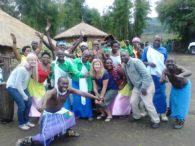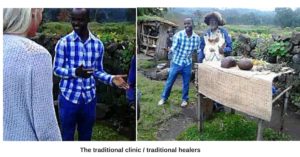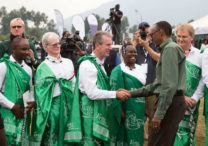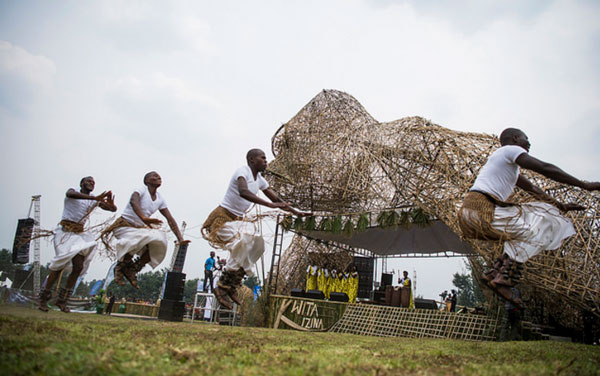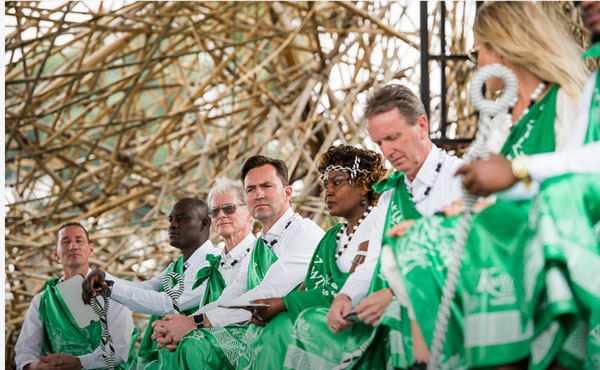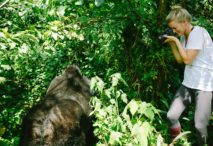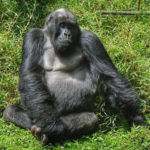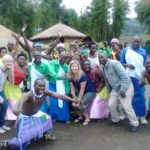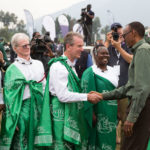Dian Fossey is one of the American primatologists and conservationists of the 20th century. She was born in January 1932 in San Francisco California United States of America. Dian Fossey became world famous for her groundbreaking work with gorillas in Central and East Africa from 1967 till her death in 1985. In 1963, Dian visited Africa for the first time and she was inspired by the wildlife in the area.
A few years later, in 1966 Dian Fossey was invited by Dr. Louis Leakey, who encouraged her to study the life of gorillas in the wild. Dr. Louis thought that by studying our closest relatives the gorillas, we would be able to understand human origin even better. With Leakey’s support, Dian began her research in 1967 in the Virunga Mountains which stretch between Uganda, Rwanda and Democratic Republic of Congo. She set up her research camp called Karisoke Research Center between Mount Visoke and Karisimbi in Rwanda.
Dian Fossey spent nearly 18 years living among the gorillas, carefully studying their behavior, family life, and communication. Through patience and care, she was able to gain the trust of many gorilla families and observe them closely. Her work helped the world understand that gorillas are gentle, intelligent, and social animals not dangerous as once believed. Unlike many who think gorilla trekking is ethical, Dian Fossey did not recommend gorilla tourism in Africa and she thought that gorillas needed to be left undisturbed in their natural habitat.
Fossey also became a strong defender of gorillas, fighting against poaching and habitat loss. She often clashed with poachers who killed gorillas for trophies or captured baby gorillas for sale. Her most famous gorilla, Digit, was killed by poachers in 1977, an event that deeply affected her and made her even more determined to protect the gorillas.
Sadly, Dian Fossey was murdered in 1985 at her Karisoke camp under mysterious circumstances. Her death remains unsolved, but it’s believed that her murder was related to her strong conviction and desire to end poaching and protecting gorillas. She was buried at her research site, near the graves of several gorillas she worked so hard to protect.
Despite her sad ending, her legacy and work of Dian Fossey and it is shared with the world through her book “Gorillas in the Mist” (1983) and the film of the same name (1988). Today the Dian Fossey Gorilla Fund International continues to work towards her mission to protect gorillas and their habitats within East and Central Africa. The population of gorillas has increased with over 1000 mountain gorillas in the vast forests of Uganda, Rwanda and DR Congo.
Hiking the Dian Fossey tomb
Hiking the Dian Fossey tomb is one of the ways to pay homage to the one of greatest mountain gorilla researchers. The hike takes you through forested slopes of Virunga Mountains to the place where Dian Fossey was buried. The hike starts early in the morning at Kinigi park headquarters with a short briefing about the hike. Visitors are guided to the trailhead at the base of Mount Bisoke. The trail takes you through thick forest and along the way you may spot other wildlife such as golden monkeys, buffaloes, forest antelopes, antelopes, rare plants and birds.
The hike usually takes about 1 to 3 hours each way depending on your fitness level and how fast you walk. At times the path can be steep and muddy in some places especially after rain. If you’re lucky, along the trails you will have an opportunity to meet some gorilla families. You will be given a short time to see them from a distance and taking photos is not allowed. After that you will continue with a trail to Dian Fossey grave.
When you reach the site you will find the remains of the Karisoke Research Camp where Dian Fossey lived and worked for many years studying mountain gorillas. The tomb is near the graves of several gorillas including Digit, her favorite gorilla. The area around the graveyard offers stunning views of the Virunga ranges and the DR Congo. The guides share knowledge about Dian Fossey’s work and research center.
What you Need for the Dian Fossey tomb hike
The Dian Fossey Tomb hike takes you through the forests of Virunga Mountains so it is important to plan well and prepare everything in advance. Below is a guide on what you need for the hike.
Travel documents
Before traveling to Rwanda ensure you have all the necessary travel documents especially the passport and VISA. Most visitors require a Rwanda tourist visa which can be obtained through Rwanda e-visa system or on arrival at Kigali International Airport. The East African residents and those with East African Tourist Visa can use it to enter Rwanda. Visitors going for Dian Fossey Tomb hike are required to show their identification documents at the park offices before they proceed to the starting point of the hike.
Dian Fossey Tomb Hike Permit
To hike to Dian Fossey tomb and Karisoke research you must have a hiking permit. The permit costs USD 75 per person and can be booked through licensed tour operators or directly from Rwanda Development Board (RDB).Hikers are required to show these permits during briefing before setting off to the starting point. The permit covers the park entry fee, service of the park guide and the security of the ranger.
Accommodation
There are many accommodation options close to Volcanoes National Park and the choice of which place to stay before and after hike depends entirely on your choice and budget. Some of these accommodation facilities around the park include; Bisate Lodge, Virunga Lodge, Sabyinyo Silverback Lodge, Mountain Gorilla View Lodge, Le Bambou Gorilla Lodge, Kinigi Guest House, and La Palme Hotel or Gorilla Volcanoes Hotel in Musanze.
Clothing
The Dian Fossey Tomb Hike involves walking through mountain forests, which can be wet and muddy, especially during the rainy season. Wearing the right clothing and gear makes the hike easier and more comfortable. Some of these include; hiking boots, long-sleeved shirts and trousers, rain jackets or poncho, gloves, walking sticks, hats and sunscreen. Other essentials one may need for the hike include; drinking water and snacks, porter (optional) as they can help to carry your bag, offer support on trail among others.
Best Time for the Dian Fossey Tomb Hike
Hiking Dian Fossey Tomb can be done year round. Rwanda has two dry seasons every year that is to say; long and short dry seasons. However the best time is during the dry season from June to September and from December to February. During this time there is less rain and hiking trails are not too muddy or slippery. It also offers a chance to visitors to have beautiful views of the Virunga Mountains and the forest.
Also it’s a good time to combine Dian Fossey Tomb hike with other activities in Volcanoes National Park like gorilla trekking, or golden monkey tracking. The rainy seasons are from March to May and October to November. During this time, it rains often and hiking trails are muddy and hard to walk on thus making hiking difficult and slower.
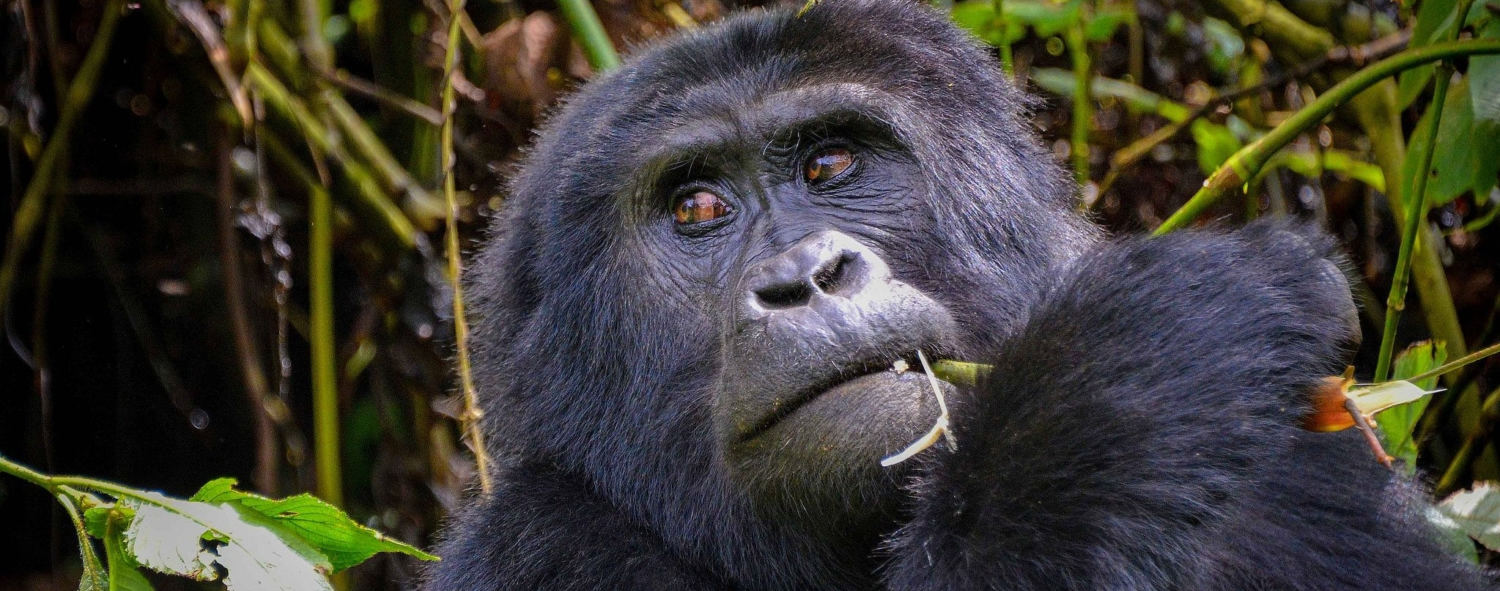

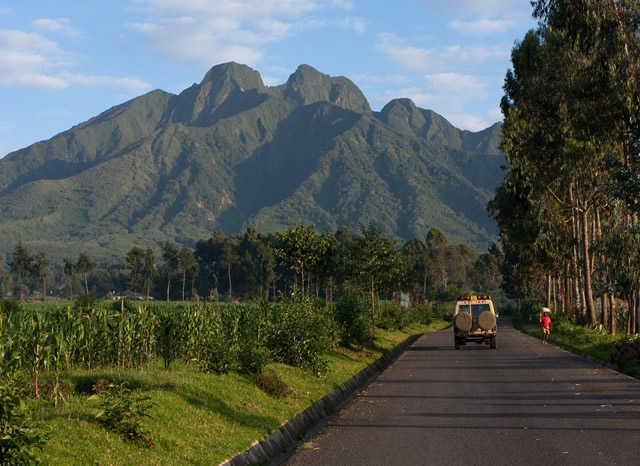
 Such penalties and financial rewards, however, have been criticized as not being sound measures to change people’s attitudes toward conservation according to a study in the Journal of the Society for Conservation Biology (Evidence of increasing human-wildlife conflict despite a financial compensation scheme on the edge of a Ugandan National Park). A new monitoring and research program has been rolled out for further study to find better ways of addressing the challenges. So far, camera traps have been set across 60 locations both in Queen Elizabeth and Kidepo Valley National Parks to monitor the lions under a joint survey between UWA and NAT GEO Wild scientists. Other measures include preventing elephants from raiding crops. UWA built an electric fence stretching 40 km along the park’s border with the Kasese district. The barrier will also be installed soon in Murchison Falls National Park.
Such penalties and financial rewards, however, have been criticized as not being sound measures to change people’s attitudes toward conservation according to a study in the Journal of the Society for Conservation Biology (Evidence of increasing human-wildlife conflict despite a financial compensation scheme on the edge of a Ugandan National Park). A new monitoring and research program has been rolled out for further study to find better ways of addressing the challenges. So far, camera traps have been set across 60 locations both in Queen Elizabeth and Kidepo Valley National Parks to monitor the lions under a joint survey between UWA and NAT GEO Wild scientists. Other measures include preventing elephants from raiding crops. UWA built an electric fence stretching 40 km along the park’s border with the Kasese district. The barrier will also be installed soon in Murchison Falls National Park.
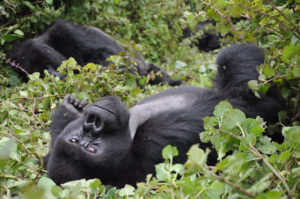 Endangered mountain gorillas breeding in the tropical rainforests of Bwindi impenetrable national park are the niche beauty of Uganda. The mountain gorillas are one of the four subspecies of gorillas. They are rare and endangered species living in two restricted isolated areas of Virunga ranges churning in Uganda, Rwanda and Dr Congo and Bwindi forest in Uganda. Uganda alone is home to almost half of the total population of mountain gorillas in the world. The Bwindi impenetrable national park has 459 gorillas out of the over 1000 individuals in the world, making it the place to be for the gorilla trekking experience. The
Endangered mountain gorillas breeding in the tropical rainforests of Bwindi impenetrable national park are the niche beauty of Uganda. The mountain gorillas are one of the four subspecies of gorillas. They are rare and endangered species living in two restricted isolated areas of Virunga ranges churning in Uganda, Rwanda and Dr Congo and Bwindi forest in Uganda. Uganda alone is home to almost half of the total population of mountain gorillas in the world. The Bwindi impenetrable national park has 459 gorillas out of the over 1000 individuals in the world, making it the place to be for the gorilla trekking experience. The 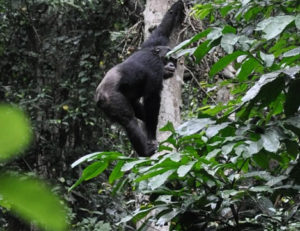 In terms of excitement and pleasure, the chimpanzees in the Kibale forest are only beaten by the mountain gorillas in Bwindi. Chimpanzees are popular in the various rainforest around the world but the ones in Kibale are in such an astronomical population and occupy a wide area range. Kibale forest has over a thousand chimpanzees, the largest population in Africa.
In terms of excitement and pleasure, the chimpanzees in the Kibale forest are only beaten by the mountain gorillas in Bwindi. Chimpanzees are popular in the various rainforest around the world but the ones in Kibale are in such an astronomical population and occupy a wide area range. Kibale forest has over a thousand chimpanzees, the largest population in Africa.